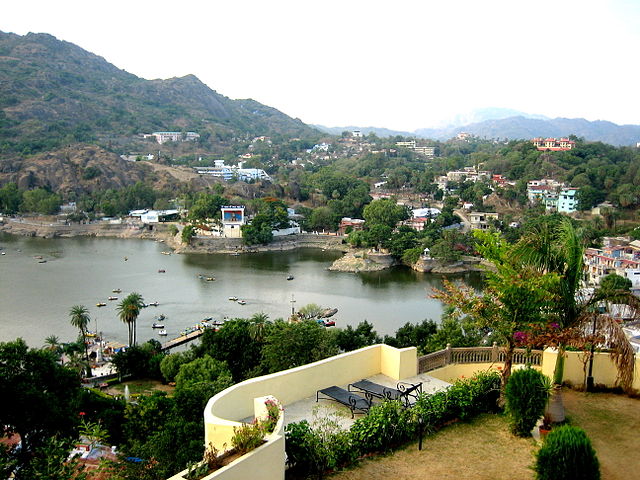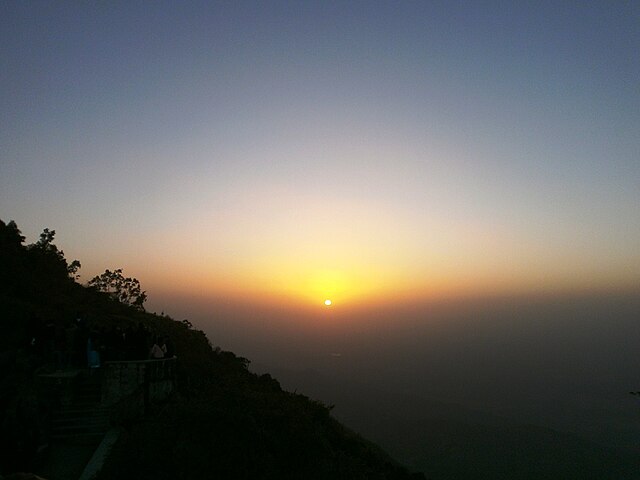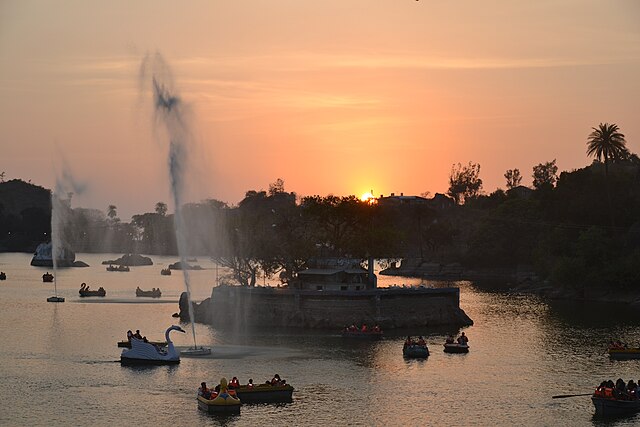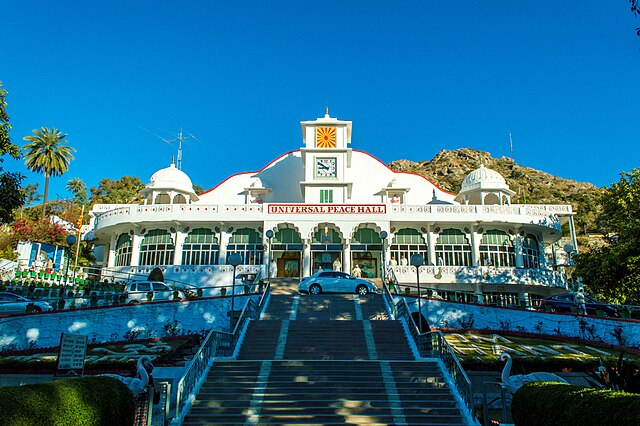Picture this: you’re driving through the arid landscapes of Rajasthan, surrounded by golden sand dunes and scorching heat, when suddenly the road starts climbing upward. The temperature drops, green trees appear, and you find yourself in what feels like an entirely different world. Welcome to Mount Abu – Rajasthan’s only hill station and perhaps its best-kept secret.
Nestled in the Aravalli Range at an elevation of 1,220 meters above sea level, Mount Abu stands as a refreshing oasis in the desert state. This charming hill station has been captivating visitors for centuries with its cool climate, stunning architecture, and breathtaking natural beauty. Whether you’re seeking spiritual enlightenment, adventure thrills, or simply a peaceful retreat from the hustle and bustle of city life, Mount Abu delivers on all fronts.
What Makes Mount Abu Special?
What sets Mount Abu apart from other hill stations across India? For starters, it’s the only hill station in Rajasthan, making it a unique destination that combines the royal heritage of the state with the refreshing charm of mountain landscapes. The contrast is striking – one moment you’re in the heart of desert culture, and the next, you’re surrounded by lush forests and cool lake breezes.
Mount Abu isn’t just about scenic beauty; it’s a melting pot of cultures, religions, and architectural styles. The famous Dilwara Jain Temples showcase some of the finest marble craftsmanship in the world, while the various viewpoints offer panoramic vistas that’ll leave you speechless. The town seamlessly blends ancient spirituality with modern tourism infrastructure, creating an experience that’s both enriching and comfortable.
The hill station serves as a summer retreat not just for tourists but also for locals from across Rajasthan and Gujarat. During the scorching summer months, when temperatures in the plains soar above 45°C, Mount Abu maintains a pleasant 25-30°C, earning it the nickname “Summer Capital of Rajasthan.”
A Brief Journey Through Mount Abu’s Rich History
Mount Abu’s history reads like a fascinating novel filled with legends, spiritual significance, and royal patronage. The name “Abu” is derived from “Arbuda,” which refers to a serpent in Hindu mythology. According to legend, the serpent Arbuda saved the life of Nandi, Lord Shiva’s bull, giving the mountain its sacred status.
The area has been a spiritual center for centuries, with various religious communities establishing their presence here. The Dilwara Temples, built between the 11th and 13th centuries, represent the pinnacle of Jain architecture and craftsmanship. These temples were constructed during the reign of the Chalukya dynasty and funded by wealthy Jain merchants who spared no expense in creating these masterpieces.
During the British colonial period, Mount Abu gained prominence as a summer retreat for British officials and their families. The British established schools, churches, and administrative buildings, many of which still stand today and add to the town’s colonial charm. The hill station became the summer headquarters for the British Resident of Rajputana, cementing its importance in the region’s administrative history.
Post-independence, Mount Abu continued to evolve as a popular tourist destination while maintaining its spiritual significance. Today, it attracts millions of visitors annually, from pilgrims seeking spiritual solace to nature lovers and adventure enthusiasts.
Where Exactly Is Mount Abu Located?

Mount Abu is strategically located in the Sirohi district of Rajasthan, near the border with Gujarat. The hill station sits proudly in the Aravalli mountain range, approximately 185 kilometers from Jodhpur, 220 kilometers from Udaipur, and 480 kilometers from Jaipur. Its proximity to Gujarat makes it easily accessible from major Gujarati cities like Ahmedabad (222 kilometers) and Gandhinagar (202 kilometers).
The town is built around Nakki Lake and spreads across the plateau of the Aravalli hills. The highest peak in the area is Guru Shikhar, standing tall at 1,722 meters above sea level, making it the highest point in Rajasthan. The geographical location provides Mount Abu with a unique microclimate that’s significantly cooler than the surrounding plains, thanks to its elevation and forest cover.
Best Time to Visit Mount Abu
Timing your visit to Mount Abu can make the difference between a good trip and an unforgettable one. The hill station enjoys a pleasant climate for most of the year, but certain seasons offer distinct advantages depending on what you’re looking for.
Weather and Climate Throughout the Year
Mount Abu experiences a subtropical highland climate that’s remarkably different from the rest of Rajasthan. Summer temperatures range from 23°C to 33°C, making it a perfect escape from the desert heat. The monsoon season brings moderate to heavy rainfall, transforming the landscape into a lush green paradise. Winters are mild and pleasant, with temperatures ranging from 12°C to 29°C.
The summer months (April to June) see Mount Abu at its busiest, as tourists flock here to escape the brutal heat of the plains. The town comes alive with activities, festivals, and events during this period. However, if you prefer fewer crowds and don’t mind occasional showers, the monsoon season (July to September) offers a completely different but equally beautiful experience.
Peak Season vs Off-Season Benefits
Peak season (April to June and October to December) brings vibrant energy to Mount Abu, with all attractions fully operational and numerous cultural events taking place. However, it also means higher accommodation prices and crowded attractions. The Summer Festival in May-June showcases local culture through folk dances, music, and competitions.
Off-season travel (January to March and July to September) offers several advantages: lower accommodation rates, fewer crowds at popular attractions, and a more intimate experience with the local culture. Monsoon visitors are treated to spectacular waterfalls, misty mornings, and the intoxicating fragrance of wet earth and blooming flowers.
Top Tourist Attractions in Mount Abu
Mount Abu is packed with attractions that cater to every type of traveler. From architectural marvels to natural wonders, the hill station offers a diverse range of experiences that keep visitors coming back for more.
Dilwara Jain Temples: Architectural Marvels
No visit to Mount Abu is complete without experiencing the breathtaking Dilwara Jain Temples. These five temples, built between the 11th and 13th centuries, are considered among the finest examples of Jain architecture in the world. The intricate marble carvings are so detailed that they seem almost impossible to have been created by human hands.
The Vimal Vasahi Temple, dedicated to the first Jain Tirthankara Adinatha, showcases some of the most exquisite craftsmanship you’ll ever see. Every pillar, ceiling, and wall tells a story through its intricate carvings. The play of light and shadow on the white marble creates an almost ethereal atmosphere that leaves visitors spellbound.
What makes these temples truly remarkable is the attention to detail – from lotus flowers carved with hundreds of petals to dancing figures that seem to come alive in the flickering light. The Luna Vasahi Temple, dedicated to Neminatha, features elaborate pillars and mandapas that demonstrate the pinnacle of medieval Indian craftsmanship.
Nakki Lake: The Heart of Mount Abu
Legend has it that Nakki Lake was dug out by the gods using their nails (nakh), giving it its unique name. This artificial lake sits at the heart of Mount Abu and serves as the town’s main attraction. The lake is surrounded by hills and strange rock formations that have been shaped by centuries of erosion into fascinating shapes.
Boating on Nakki Lake is a must-do activity that offers a different perspective of Mount Abu’s landscape. As you glide across the calm waters, you’ll see the famous Toad Rock, which resembles a giant toad about to jump into the lake. The Gandhi Ghat and Raghunath Ghat around the lake are perfect for quiet contemplation and photography.
The lake comes alive during sunset when the surrounding hills cast their reflection on the water, creating a mirror-like effect that’s absolutely magical. Local vendors sell corn, peanuts, and ice cream along the lakeside promenade, adding to the charming small-town atmosphere.
Guru Shikhar: Touching the Sky

Standing at 1,722 meters above sea level, Guru Shikhar is the highest peak in the Aravalli Range and all of Rajasthan. The journey to the summit is an adventure in itself, winding through dense forests and offering glimpses of the valley below. At the top, you’ll find the Guru Dattatreya Temple, adding spiritual significance to the natural beauty.
The panoramic views from Guru Shikhar are nothing short of spectacular. On clear days, you can see for miles in every direction, with the Aravalli hills stretching toward the horizon like frozen waves. The sunrise and sunset views from here are particularly breathtaking, making the early morning or evening climb absolutely worthwhile.
The area around Guru Shikhar is also perfect for nature walks and bird watching. The cooler temperatures and diverse flora create an ideal habitat for various bird species, making it a paradise for nature enthusiasts and photographers.
Sunset Point: Nature’s Daily Show
Every evening, locals and tourists gather at Sunset Point to witness one of nature’s most spectacular daily performances. As the sun begins its descent toward the horizon, the sky transforms into a canvas painted with brilliant shades of orange, pink, and purple.
The view from Sunset Point encompasses the entire valley, with Mount Abu spread out below like a miniature town. The sight of the sun disappearing behind the Aravalli hills while casting its golden glow over the landscape is truly unforgettable. The cool evening breeze and the gradual transition from day to night create a peaceful atmosphere that’s perfect for reflection and photography.
Local vendors sell hot tea, coffee, and snacks, making it easy to enjoy a comfortable viewing experience. The point gets quite crowded during peak season, so arriving early ensures you get the best spots for photography and unobstructed views.
Mount Abu Wildlife Sanctuary
Spread across 290 square kilometers, the Mount Abu Wildlife Sanctuary is a haven for nature lovers and wildlife enthusiasts. The sanctuary is home to over 250 bird species, making it a paradise for birdwatchers. The diverse ecosystem includes subtropical forests, grasslands, and rocky terrain that support a variety of flora and fauna.
The sanctuary is famous for housing the rare sloth bear, leopard, sambar deer, wild boar, and langur monkeys. The birdlife is particularly impressive, with species like the grey jungle fowl, green avadavat, and various types of bulbuls calling the sanctuary home. The best time for wildlife spotting is early morning or late afternoon when animals are most active.
Trekking trails within the sanctuary offer opportunities to explore different ecosystems while enjoying the fresh mountain air. The sanctuary also plays a crucial role in conservation, protecting endangered species and maintaining the ecological balance of the region.
Adventure Activities and Outdoor Fun
Mount Abu isn’t just about temples and scenic views – it’s also an adventure lover’s paradise. The diverse terrain and pleasant climate make it perfect for various outdoor activities that get your adrenaline pumping.
Trekking and Hiking Trails
The Aravalli hills around Mount Abu offer numerous trekking opportunities for both beginners and experienced hikers. The trek to Guru Shikhar is the most popular, offering moderate difficulty levels and rewarding views. The trail winds through dense forests, rocky outcrops, and meadows filled with wildflowers.
For those seeking more challenging adventures, the trek to Bailey’s Walk provides a thrilling experience through rugged terrain and ancient rock formations. This trail is less crowded, offering a more intimate experience with nature. The path leads through diverse landscapes, from thick forests to open meadows, each offering unique photographic opportunities.
The Honeymoon Point trek is perfect for couples and families, offering an easy walk through scenic landscapes with multiple viewpoints along the way. These trails are well-marked and maintained, making them safe for visitors of all ages and fitness levels.
Boating and Water Sports
Nakki Lake serves as the center for water-based activities in Mount Abu. Boating options range from pedal boats for families to rowboats for those who prefer a more hands-on experience. The lake’s calm waters make it perfect for beginners, while the surrounding scenery ensures an enjoyable experience for everyone.
During peak season, the lake also offers water sports like jet skiing and banana boat rides, adding an element of excitement to the traditional hill station experience. The cool mountain air and scenic surroundings make these activities even more enjoyable than their coastal counterparts.
Fishing is another popular activity, with the lake home to various fish species. Local guides can arrange fishing expeditions for those interested in trying their luck at catching dinner while enjoying the peaceful lake environment.
Where to Stay in Mount Abu
Mount Abu offers accommodation options for every budget and preference, from luxury resorts that pamper you with world-class amenities to budget-friendly guesthouses that provide comfort without breaking the bank.
Luxury Resorts and Heritage Hotels
For those seeking the ultimate in comfort and luxury, Mount Abu doesn’t disappoint. The Colonial Manek Manor offers a blend of colonial charm and modern amenities, with rooms that provide stunning views of the surrounding hills. The hotel’s architecture reflects the British colonial era while incorporating modern conveniences.
The Hillock Mount Abu provides a perfect combination of luxury and nature, with rooms designed to maximize the scenic views while providing top-notch comfort. The resort’s spa services, fine dining restaurants, and recreational facilities ensure a memorable stay for discerning travelers.
Heritage hotels like Hotel Hilltone offer a glimpse into Mount Abu’s royal past while providing modern amenities. These properties often feature traditional Rajasthani architecture, courtyards, and personalized service that makes guests feel like royalty.
Budget-Friendly Accommodations
Budget travelers will find plenty of options that offer comfort without compromising on the Mount Abu experience. Hotel Lake Palace provides clean, comfortable rooms with lake views at affordable rates. The hotel’s location near Nakki Lake makes it convenient for exploring the main attractions on foot.
Guesthouses and homestays offer authentic local experiences while keeping costs low. These accommodations often provide home-cooked meals and insider tips from local hosts who know the area intimately. Many budget properties are family-run businesses that offer personalized attention and genuine hospitality.
Youth hostels and backpacker accommodations cater to solo travelers and groups looking for affordable stays. These properties often organize group activities and provide common areas where travelers can meet and share experiences.
Local Cuisine and Must-Try Dishes
Mount Abu’s culinary scene reflects its diverse cultural influences, combining traditional Rajasthani flavors with influences from Gujarat and other regions. The hill station’s unique position creates a food culture that’s both familiar and surprising.
Rajasthani Delicacies
Traditional Rajasthani cuisine takes center stage in Mount Abu’s restaurants and local eateries. Dal Baati Churma remains the most popular dish, with local variations that incorporate mountain herbs and spices. The cooler climate allows for different cooking methods that enhance the traditional flavors.
Gatte ki Sabzi, Ker Sangri, and Laal Maas are other Rajasthani specialties that taste even better in the mountain air. Local restaurants often prepare these dishes with slight modifications to suit the diverse palates of tourists while maintaining their authentic character.
The abundance of dairy products in the region makes Mount Abu famous for its fresh paneer dishes and milk-based sweets. Local dhaba-style restaurants serve generous portions of these traditional dishes at reasonable prices.
Street Food Adventures
The streets around Nakki Lake come alive with food vendors selling local snacks and treats. Bhel puri, pani puri, and other chaat items are popular among visitors looking for quick, tasty bites. The cool mountain air makes these spicy snacks even more enjoyable.
Local specialties include stuffed kulfi, corn on the cob with local spices, and various types of namkeen (savory snacks) that are perfect for munching while exploring the town. Tea stalls serve fresh masala chai with locally made snacks, providing perfect pit stops during sightseeing.
The evening food market near the main bazaar offers a variety of local sweets and snacks that make perfect souvenirs or gifts for friends and family back home.
How to Reach Mount Abu
Getting to Mount Abu is easier than you might think, with multiple transportation options available depending on your starting point and preferences.
The nearest railway station is Abu Road, located about 28 kilometers from Mount Abu town. Regular trains connect Abu Road to major cities like Delhi, Mumbai, Jodhpur, and Ahmedabad. From Abu Road, buses and taxis are readily available for the scenic drive up to Mount Abu. The winding road offers beautiful views of the surrounding landscape and serves as a preview of the scenic beauty awaiting visitors.
For those preferring to drive, Mount Abu is well-connected by road to major cities in Rajasthan and Gujarat. The highways are well-maintained, and the final stretch up to Mount Abu, while winding, is an enjoyable drive through changing landscapes. Private taxis and rental cars are available from major cities, offering flexibility and comfort.
The nearest airport is Maharana Pratap Airport in Udaipur, approximately 210 kilometers away. From there, taxis and buses provide convenient transportation to Mount Abu. Many visitors combine their Mount Abu trip with visits to other Rajasthani cities, making it part of a larger circuit.
Shopping and Local Markets
Shopping in Mount Abu offers a delightful mix of traditional Rajasthani handicrafts, local specialties, and unique mountain products. The main market areas around Nakki Lake and the bus stand provide numerous shopping opportunities.
Local handicrafts include traditional Rajasthani textiles, embroidered fabrics, and mirror work items that make perfect souvenirs. Jewelry made from local stones and metals offers unique pieces that reflect the region’s craftsmanship. Wooden handicrafts, including carved figurines and decorative items, showcase local artisan skills.
The Tibetan Market, run by Tibetan refugees, offers a different shopping experience with prayer flags, handicrafts, woolen items, and traditional Tibetan jewelry. This market adds an interesting cultural dimension to the Mount Abu shopping experience.
Local food products like homemade preserves, pickles, and sweets make excellent gifts. Many shops also sell aromatic spices and herbs that grow in the mountain climate, offering visitors a chance to take home the flavors of Mount Abu.
Cultural Festivals and Events
Mount Abu’s cultural calendar is packed with festivals and events that showcase the region’s rich heritage and vibrant community spirit. These celebrations provide visitors with opportunities to experience local culture firsthand.
The Summer Festival, held annually in May-June, is Mount Abu’s biggest cultural celebration. The three-day festival features folk music and dance performances, competitions, and cultural programs that attract visitors from across the country. Local artists showcase traditional Rajasthani and Gujarati art forms, creating a vibrant atmosphere throughout the town.
Religious festivals like Diwali, Holi, and various Jain festivals are celebrated with great enthusiasm. The Dilwara Temples host special ceremonies during Jain festivals, offering visitors insights into ancient traditions and spiritual practices.
The Arbuda Festival celebrates the local culture and history of Mount Abu with processions, cultural performances, and traditional food stalls. This festival provides an excellent opportunity to interact with locals and understand the area’s cultural significance.
Photography Tips for Mount Abu

Mount Abu offers endless photography opportunities, from architectural marvels to stunning landscapes. Here are some tips to help you capture the best shots during your visit.
Golden hour photography around Nakki Lake produces magical results, with the soft light reflecting off the water and illuminating the surrounding rocks. The early morning mist often creates ethereal effects that add drama to landscape shots.
The intricate carvings at Dilwara Temples require careful attention to lighting and composition. Use natural light whenever possible, and consider multiple angles to capture the depth and detail of the marble work. Close-up shots of individual carvings can be as impressive as wide-angle temple interiors.
Sunset Point photography requires patience and timing. Arrive early to scout the best positions and be prepared for changing light conditions. The dramatic sky colors often last only a few minutes, so having your camera ready is essential.
Wildlife photography in the sanctuary requires early starts and quiet movements. Long lenses are helpful for bird photography, while wide-angle lenses can capture the diverse landscapes within the sanctuary.
Travel Tips and Essential Information
Planning ahead ensures a smooth and enjoyable Mount Abu experience. Here are some essential tips that will help you make the most of your visit.
Pack layers of clothing as temperatures can vary significantly between day and night, especially during winter months. Comfortable walking shoes are essential for exploring temples and trekking trails. Don’t forget sunscreen and sunglasses, as the mountain sun can be quite strong during the day.
Respect local customs and dress codes, especially when visiting religious sites. The Dilwara Temples have strict rules about photography and require visitors to remove leather items before entering. Planning your temple visits accordingly saves time and prevents disappointment.
Book accommodations in advance, especially during peak season and festival times. Popular hotels and resorts fill up quickly, and last-minute bookings may result in limited options or higher prices.
Stay hydrated and carry water bottles during treks and sightseeing. While Mount Abu is cooler than other parts of Rajasthan, physical activities still require adequate hydration.
Conclusion
Mount Abu stands as a testament to nature’s ability to create something truly extraordinary. This jewel in Rajasthan’s crown offers a perfect blend of natural beauty, architectural wonders, spiritual significance, and cultural richness that creates memories lasting a lifetime. Whether you’re seeking adventure, tranquility, spiritual enlightenment, or simply a break from the ordinary, Mount Abu delivers an experience that exceeds expectations.
The hill station’s unique position as Rajasthan’s only mountain retreat makes it special, but it’s the warmth of its people, the richness of its culture, and the breathtaking beauty of its landscapes that make it unforgettable. From the marble masterpieces of Dilwara Temples to the serene waters of Nakki Lake, from the panoramic views at Guru Shikhar to the vibrant energy of local markets, every aspect of Mount Abu contributes to an enriching travel experience.
As you plan your visit to this remarkable destination, remember that Mount Abu isn’t just a place to see – it’s a place to experience, feel, and absorb. Take time to sit by the lake, watch the sunset paint the sky, listen to the temple bells, and breathe in the fresh mountain air. These moments of connection with the place and its culture are what transform a simple trip into a journey of discovery.
Frequently Asked Questions
1. What is the best time to visit Mount Abu for families with children?
The best time for families is October to March when the weather is pleasant and cool. This period offers comfortable temperatures for sightseeing and outdoor activities, with minimal chances of rain. The Summer Festival in May-June is also great for families, though it can be crowded.
2. How many days are ideal for a Mount Abu trip?
A 3-4 day trip is ideal for Mount Abu. This allows you to visit all major attractions like Dilwara Temples, Nakki Lake, and Guru Shikhar without rushing. You’ll also have time for leisure activities, local shopping, and experiencing the hill station’s peaceful atmosphere.
3. Is Mount Abu suitable for solo female travelers?
Yes, Mount Abu is very safe for solo female travelers. The hill station has a friendly local community, good tourism infrastructure, and is generally well-patrolled. However, basic safety precautions like avoiding isolated areas after dark are always recommended.
4. Can I visit Dilwara Temples throughout the year?
Yes, Dilwara Temples are open year-round, but they have specific visiting hours (12 PM to 6 PM for non-Jains). The temples are closed during lunch hours and certain Jain festivals. It’s best to check current timings before visiting, especially during festival seasons.
5. What are the transportation options within Mount Abu?
Mount Abu is a small hill station that can be easily explored on foot for most attractions. Local taxis, auto-rickshaws, and rental bikes are available for longer distances. Many hotels also provide shuttle services to major attractions. Walking is often the most enjoyable way to explore the town’s charming streets and markets.

